Статьи журнала - Arctic and North
Все статьи: 955
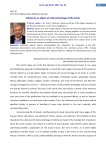
Solovki as an object of cultural heritage of the Arctic
Статья научная
Solovki as a multi-subject object of cultural and natural heritage of the Arctic is one of the unique monuments of our time, bringing together at one place several historical periods of life in Russia. The review article presents one of the first attempts in the scientific literature to make a comprehensive approach to the study of all the cultural and historical heritage of the Solovetsky Islands from ancient times to the present day, based on a multidisciplinary approach.
Бесплатно

Статья научная
The article presents some results of sociological surveys of the population of a region of the Russian Arctic − Murmansk region in recent years. Emphasis is placed on the estimates of financial position, purchasing power, identity , social mood and expectations.
Бесплатно
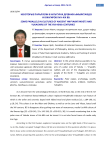
Some parallels between cultures of ancient Ymyyakhtakhets and Yukaghirs of the XVII-XIXth centuries
Статья научная
In this article obvious parallels in material and spiritual cultures of ancient inhabitants of a polar zone of Yakutia — Ymyyakhtakhets and one of the disappearing native people of the North — Yukaghirs are considered.
Бесплатно
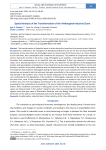
Spatial Analysis of the Transformation of the Arkhangelsk Industrial Zone
Статья научная
The transformation of industrial zones in cities during the transition of economy to post-industrial development is reflected in the emergence of abandoned industrial areas on the sites of closed inefficient enterprises. At the same time, the city budget ceases to receive taxes from these areas. For a more rational use of such lands, their revitalization and renovation are necessary. The problem of using former industrial zones is typical for all cities in the Arctic. Using Arkhangelsk as an example, a retrospective analysis of the formation and transformation of its industrial zone was conducted. It does not represent a continuous space, but is located separately in several parts of the city. Based on the peculiarities of the geographical location and specialization of production, three industrial areas have been identified: Northern, Central and Southern. Analysis of the public cadastral map has determined the current state of the industrial territories of enterprises that existed in Arkhangelsk during the Soviet period. It was revealed that most of the closed enterprises are located in districts with poor transport accessibility in the northern area on island territories and partially in the southern area. These are mainly enterprises of the timber industry complex. This process contributed to the degradation of the outskirts of Arkhangelsk, especially on the island territories. At the same time, most of the remaining timber industry enterprises are located in the central part of the northern area, near the main highway connecting it to the city center and the seaport. This area is the most promising for the revitalization of production. The central industrial area has undergone the least transformation. Here, residential construction is taking place on the site of industrial sites, and public and business spaces are being created. In the southern industrial area, there are promising territories for the creation of logistics zones (the port areas of Zharovikha, Bakaritsa, and Levy Bereg). Former industrial zones on island territories can be used to create landscape parks and to develop recreation.
Бесплатно
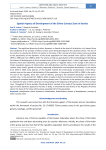
Spatial Aspects of Development of the Ethno-Contact Zone in Karelia
Статья научная
The significant diversity of ethnic dynamics in Karelia at the level of its districts is of interest from the standpoint of the concept of ethno-contact zones being developed in the national science. The aim of the study is to classify the districts of Karelia on the basis of the concept of ethno-contact zones according to the peculiarities of the dynamics of the titular population for three periods: from 1933 to 1959, from 1959 to 1989 and from 1989 to 2010. The article carried out approbation of the methodology of identifying the phases of development of ethno-contact zones at the intra-regional level. In total, eight types of ethnic dynamics have been identified, corresponding to positive or negative values in the change in the share of titular population (waves of titularization and detitulization) and four phases of development of ethno-contact zones (initial, growth of contact, beginning of dissolution and complete dissolution). In the period from 1933 to 1959, most districts of the republic entered the initial phase of dissolution of the ethno-contact zone on the wave of detitulization of the population. In the period from 1959 to 1989, in the northern part of the republic, there was a belt of districts, passing to the complete dissolution of the ethno-contact zone. In the period from 1989 to 2010, all eastern districts of Karelia and northern Ladoga were in the phase of complete dissolution of the ethno-contact zone. The districts in the western part of the republic retained the type of ethnic dynamics corresponding to the beginning of dissolution of the ethno-contact zone. Throughout all three periods, Olonetskiy district, located in the south of the republic, demonstrated a type of ethnic dynamics atypical for Karelia. In 2010, it remained the only district of the Republic of Karelia where the share of the titular ethnic group exceeded half of the population.
Бесплатно
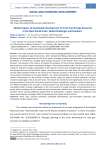
Статья научная
The article presents the authors’ vision of the emerging geopolitical factors determining Russia’s position in the global energy infrastructure, which allowed identifying problems and defining priorities and directions of spatial organization of the Arctic system of energy transport communications, expanding the possibilities of involvement of highly liquid energy resources of the Russian Arctic into active economic turnover. The purpose of the study is to analyze the prospects of the economic development of Arctic energy resources in the context of projected changes in the world economic order from the standpoint of ensuring the long-term energy sustainability of the national economy and strengthening Russia’s position in the energy markets of the Asia-Pacific region. The data presented in the study show the vulnerability of the current export-oriented model of the resource-raw materials economy in Russia due to technological and infrastructural limitations of transport logistics. The study substantiates the need to form a new world-system infrastructure for the country’s energy security using the natural resource potential and geo-economic advantages of the Arctic territories. This implies the involvement of highly liquid reserves of fossil energy resources in the Arctic into active economic turnover through the creation of mineral resource centers (MRCs) included in the structure of world economic fuel and energy relations. To achieve this goal, a conceptual model of spatial organization of the Arctic system of energy transport communications is proposed, which combines marine, coastal and land infrastructure facilities into intermodal energy transport corridors (IETC), opening additional opportunities for participation in global, national, interregional value chains and providing a synergetic effect of development of remote Arctic territories.
Бесплатно
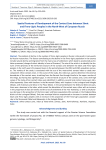
Статья научная
The problem of decline in the number of Finno-Ugric peoples in Russia is discussed in many works by Russian researchers. The factors contributing to the decline in the Finno-Ugric population in the country include natural decline and migration from the main areas of settlement, which leads to accelerated assimilation processes (change of ethnic identity in favor of Russians). The aim of the article is to identify the features of the dynamics of the territorial structure of the contact zone between the Slavic and Finno-Ugric peoples in the north-west of European Russia in the period between the 2010 and 2021 population censuses. The novelty of the study is associated with the use of the meta-ethnic contact index to study two-component ethno-contact zones. In the course of the study, this index was used to determine the external boundaries of the contact zone, stretching from the Barents Sea through Karelia to the upper reaches of the Volga, but having two significant gaps. In the territorial structure of the contact zone, cores with high values of the meta-ethnic contact index were identified. In addition, several local contact zones were identified separately: Slavs with Karelians in the Murmansk Oblast, with Vepsians in the Leningrad and Vologda Oblasts, with Estonians and Setos in the Pskov Oblast. In the period between the 2010 and 2021 censuses, there was a decrease in the index, which meant the dissolution of the contact zone, either with an increase in the proportion of Slavs (in Karelia and the area of settlement of the Tver Karelians), or with a simultaneous decrease in the proportion of the Finno-Ugric and Slavic populations (for example, in the Podporozhskiy district of the Leningrad Oblast). Only two municipal districts experienced an increase in contact between Slavic and Finno-Ugric peoples with an increase in the proportion of the Finno-Ugric population: Lovozerskiy in the Murmansk Oblast and Babaevskiy in the Vologda Oblast.
Бесплатно
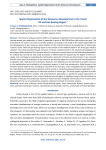
Spatial Organisation of Gas Resources Development in the Yamal Oil and Gas Bearing Region
Статья научная
The Yamal oil and gas province (OGP) is strategically important for the Russian gas industry. In the coming decade, gas production in Yamal is expected to grow to 180–200 billion cubic meters per year. The main goal of the article is to solve a scientific problem consisting in the study of the spatial organization of the development of gas resources, determination of the rational structure of reproduction of natural gas reserves in the Yamal oil-gas-bearing region in the context of the modernization of the Arctic gas industry complex. The article assessed the gas resources of Yamal, revealed trends in the economic development of natural gas fields, presented the characteristics of investment projects based on the fields being developed. An analysis was carried out that made it possible to differentiate the deposits by the degree of their prospects, and a strategy for expanding the hydrocarbon potential of Yamal was determined. It was revealed that the main areas of production in the Yamal oil-gas-bearing region are associated with the development of deposits with a high level of Cenomanian deposits. Such deposits are characterized by a higher increase in the capitalization and profitability of investment projects in real time compared to fields located in the northern and far eastern seas, including on the shelf of the Kara Sea. It was concluded that the strategy for the reproduction of hydrocarbon potential will be aimed at conducting prospecting and exploration in order to transfer forecast resources to industrial reserves of natural gas. The study applies a general scientific methodology providing for systemic and comprehensive approaches to justify the spatial organisation of gas resources development in the Yamal oil and gas bearing region. A significant body of factual material on the state of free gas and condensate reserves in Yamal has been analyzed. The results of the research were obtained with the use of comparative-analytical, statistical methods of economic analysis.
Бесплатно
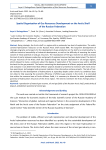
Spatial Organization of Gas Resources Development on the Arctic Shelf of the Russian Federation
Статья научная
Being strategic, the Arctic shelf is a region with an extremely low level of exploration. The undiscovered hydrocarbon resources on the Russian Arctic shelf exceed 90%. The long-term development of strategic programs and projects for the development of gas production on the shelf are constrained by insufficient technical accessibility of industrial development, as well as the difficulty of assessing the actual volume of initial potential oil and gas resources. The reproduction of free gas reserves has been assessed, the level of parity between production and growth of explored reserves has been determined. The state of the gas resources of the Arctic shelf was studied taking into account localization in oil and gas regions, which allowed to make a conclusion about the degree of exploration of the resource base and to identify the basis for the gas potential. The factors restraining the development of offshore projects were identified and analyzed. It was determined that offshore projects should be presented to investors with more attractive operational, technological and economic indicators than alternative onshore projects. The lack of tested methods for the development of hydrocarbons at superdeep depths under severe ice conditions does not allow to fully assessing the economic efficiency of offshore gas projects in the Arctic. It is concluded that within the resource base of Arctic offshore fields, it is necessary to allocate the static (probabilistic) potential of hydrocarbon resources of the Arctic region. The need to transform the Arctic foreign policy is identified.
Бесплатно
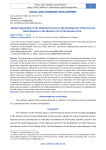
Статья научная
The article analyzes the possibilities of studying the issues of the interterritorial distribution of the economy, taking into account maritime communications in the development of solid minerals in the western sector of the Russian Arctic on the basis of interaction of national and corporate interests at the regional level. Relatively large deposits of solid minerals are located in this region. The development of non-ferrous metal deposits, taking into account the requirements of rational nature management, is the engine of economic development in the western Arctic regions of Russia. An urgent task is the scientific substantiation of favorable conditions for the comprehensive development of marine activities, necessary technological and human potential, economic benefits from the use of domestic marine potential, mineral resources and spaces of the western part of the Russian Arctic in the interests of national security, economic development and improving the welfare of citizens of the Russian Federation. The information framework is based on the experience of developing lead-zinc ore deposits in the Arctic. The topic under study is consistent with the provisions of regional and sectoral economics, as well as spatial economics. This scientific basis makes it possible to substantiate the spatial organization of the national economy in the development of solid minerals in the western part of the Russian Arctic.
Бесплатно
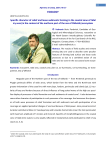
Статья научная
The results of field studies and remote sensing data are used to describe some peculiar features of forming land surface and loose rocks processes as due to a combined action of sea tides and ice cover in the sea coastal zone ecosystem.
Бесплатно

Specifics of design and construction of low-rise buildings in the Arctic
Статья научная
As a result of low storey buildings reconnaissance in the European part of the Arctic zone of Russia for a period of about 30 years, a number of peculiarities of their designing, construction and exploitation in conditions of frigid climate have been found out. The imperfection of currently in effect federal building law is marked. An average cost of square meter of living space in federation territorial entities by the end of 2014 has been analyzed. Suggestions for federal and regional legislation improvement have been developed.
Бесплатно

Статья научная
Living in the territory of Far North (and in the equated territories) has its specificity which is reflected in all aspects of life of the population. The authors consider natural and climatic features of the Polar region and the specifics of labor’s process of locals (by the example of teachers). The review of statistics and educational policy of authorities of the Yamal-Nenets Autonomous District is carried out, the results of sociological research of teachers of the region are presented (questionnaire). The analysis of periods of living of the population at the Far North is presented, the degree of social rootedness of teachers is defined, the assessment of the main factors determining the interest of migrants to work at northern school and the main motives of moving to Far North is presented. The materials of a sociological research show in general the satisfactory estimates by teaching, conditions and quality of life that allow to predict their further fixing in the territory of the District, the dynamic and sustainable development of the autonomous District. The received results are applicable in the activity of governing bodies of the general education.
Бесплатно

Specifics of the migratory processes in the north of Europe (case of the Kingdom of Denmark)
Статья научная
Migration processes and policies of the northern European countries are studied with the focus on the Kingdom of Denmark. The area of the study got a sufficient attention, but the Denmark has not been considered as a carrier of a specific migration model. The model is characterized by relatively low share of migrants from non-European countries, strict immigration laws and policy of limiting the migration. Studying the case of Denmark, it is important to examine the effect the migration has on the ethno-cultural and economic situation in the Arctic countries, including Russia and its areas with an extensive transnational and cross-border communication. Comparative analysis and synthesis, mathematical and statistical methods were used to do so.
Бесплатно
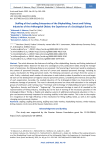
Статья научная
The article discusses the features of staffing of the shipbuilding, forestry and fishing industries of the Arkhangelsk Oblast. Based on the data of a sociological survey conducted in 2022 among the management of enterprises, the following features are analyzed: the forecasting of personnel needs by employers, the content of personnel forecasts, the level of current and expected personnel shortage, including its causes, mechanisms for filling personnel needs. The following conclusions are drawn from the survey results. Firstly, a relatively small number of enterprises in each industry makes it possible to carry out targeted work on the development of regional sectoral personnel policies, considering the interests and specifics of each organization. Secondly, the studied industries of the Arkhangelsk Oblast are characterized by a moderate shortage of personnel. The most in-demand personnel are those with education in the enlarged groups of professions and training areas “Technique and technology of shipbuilding and water transport”, “Agriculture, forestry and fisheries”, “Engineering”. The personnel shortage is most of all revealed by the representatives of fishing industry, including due to the lack of training of the necessary specialists in the Arkhangelsk Oblast. Thirdly, a flexible and adaptive system of additional professional education in the region can become extremely important for ensuring stability in the labor market. This is due to the employers’ recognition of the high efficiency of this mechanism for filling staffing needs, as well as the rapidly changing socio-economic situation.
Бесплатно
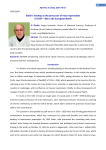
Stalin’s NeoNEP as the precursor of mass repressions of 1937-38s in the European North
Статья научная
The article reveals the author's version of one of the causes of mass repressions of 1937-38 arising from the phenomenon of NeoNEP (New Economic Policy) of 1934-1936, which lasted for a short time in the country after the derationing and a kind of a respite after the overarching of the new Bolshevikbuilt socialism.
Бесплатно
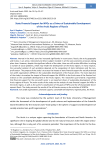
Статья научная
Interest in the Arctic zone has increased significantly in recent years. Russia, due to its geography and history, is an active, interested and direct subject involved in all the socio-economic processes taking place here. However, despite the significant efforts of the state, there are still certain difficulties in solving a number of social problems, which may hinder the development of the Arctic regions. In many respects, the successful solution of such problems depends on the cooperation of state institutions and the nonprofit sector. The purpose of the study is to assess the impact of state financial support for socially oriented non-profit organizations (NPOs) on the sustainable development of the Russian Arctic. The main objective of the study is to analyze the impact of financial support for SONPOs in the Arctic zone of the Russian Federation on the sustainable development of the Arctic regions. The researchers put forward a hypothesis that financial support for the non-profit sector is an important driver of sustainable development of the Arctic regions of Russia. The main results of the study are the analysis of state financial support for NPOs in the Arctic region, as well as the author’s classification of the goals of NPOs and the UN Sustainable Development Goals. The study presents the results of the all-Russian survey on the activities of SONPOs.
Бесплатно

State policy towards indigenous peoples of Alaska: historical review and contemporary issues
Статья научная
The article analyzes main stages of policy development towards indigenous peoples of Alaska and its influence on aboriginal cultures from the beginning of Russian colonization in the 18th century up to present time. The authors conclude that current policy towards indigenous peoples in Alaska can be generally evaluated as successful and supporting development of traditional cultures. The main achievements of this policy are: high level of self-organization and self-government of Alaska natives, legally secured rights for land and resources, progress in conservation of cultural heritage. However, social and economic challenges faced by indigenous people present a potential threat to the political stability in Alaska.
Бесплатно
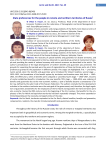
State preferences for the people in remote and northern territories of Russia
Статья научная
The necessity of special benefits and guaranties for distant territories, and areas of the Far North and equivalent territories, allocated in a special group, aimed at involvement of people and providing the needs of national economy with natural resources are described in the article. The author’s periodization of the legal development of northern benefits and guaranties was presented. The grounds for separating the periods were the years of regionalization of these territories and a set of state preferences granted to the population in different periods. Five stages are highlighted: first — pre-Soviet, tsarist period, when the benefits and guaranties were introduced for distant localities; second stage — 1923–1932, the foundations of the benefit system by territories and branches were laid; third — 1942– 1945, the WWII years, when all benefits were collapsed or cancelled, fourth stage — 1946–1967, recovery of earlier established benefits, introduction the new benefits; fifth stage — 1990–2014, was ordering of benefits and guaranties due to the new economic realities; a part of benefits became a competence of labor law, defined by the Labor Code of the Russian Federation. The authors conclude that the development activities in the northern territories were the main goal of the government, and, therefore, the legal regulation of guaranties and benefits for the employees of the Far North and equivalent for them territories were also a priority. During the 20th century and in the beginning of the 21st century, the benefits for the employees of the Far North and equivalent territories had been repeatedly changed. They were expanded or limited depending on the necessity and opportunities of the state.
Бесплатно


